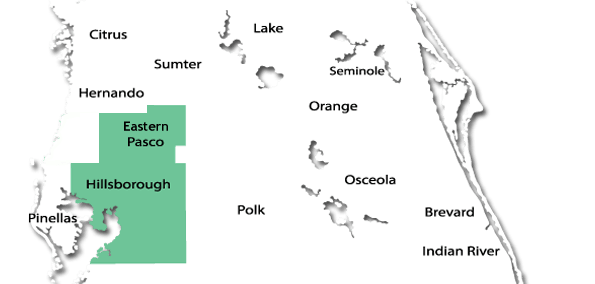Tree Planting Tips for Florida Homeowners
Planting trees is one of the best ways Florida homeowners can enhance their landscapes while improving air quality, providing shade, and supporting local ecosystems. However, successful tree planting requires careful selection, proper placement, and ongoing maintenance to ensure long-term health. Here are some essential tree planting tips to help homeowners in Florida establish strong, thriving trees.
1. Choose the Right Tree for Your Location
Selecting a tree species suited to Florida’s climate and soil conditions is crucial. Native trees such as Live Oak, Bald Cypress, and Southern Magnolia thrive in Florida’s environment with minimal maintenance. Consider factors like sunlight, moisture levels, and space availability before choosing a tree.
2. Select an Ideal Planting Site
Proper placement ensures the tree’s longevity and prevents potential issues. When selecting a planting site:
- Avoid placing trees too close to structures, driveways, or power lines.
- Choose a location with appropriate sunlight exposure based on the tree species.
- Ensure adequate spacing from other trees and plants to allow for proper growth.
3. Prepare the Soil Properly
- Healthy soil is vital for tree growth. Florida’s sandy soil may require soil amendments, such as compost or organic matter, to improve nutrient content and moisture retention. Conducting a soil test can help determine if additional nutrients or pH adjustments are needed.
4. Dig the Correct-Sized Hole
Digging a proper hole is key to root establishment. The hole should be:
- Twice as wide as the tree’s root ball to encourage outward root growth.
- No deeper than the root ball’s height to prevent sinking and root suffocation.
5. Plant at the Right Depth
- Planting too deep or too shallow can harm the tree. The top of the root ball should be level with or slightly above the surrounding soil. Avoid covering the trunk base with soil, as this can cause rot and pest issues.
6. Water Properly
Newly planted trees need consistent watering, especially in Florida’s hot climate. Follow these watering guidelines:
- Water deeply but infrequently to encourage deep root growth.
- Use a slow-drip system or soaker hose to prevent runoff and ensure even absorption.
- Reduce watering frequency once the tree is established, usually after the first year.
7. Apply Mulch for Moisture Retention
- Mulching helps retain moisture, regulate soil temperature, and suppress weeds. Use organic mulch like wood chips or pine bark, and apply it in a 2-3 inch layer around the tree base. Keep mulch a few inches away from the trunk to prevent rot and pest infestations.
8. Stake Only If Necessary
Most young trees do not require staking unless they are in a windy location or have weak root systems. If staking is needed:
- Use flexible ties to allow slight movement, promoting stronger roots.
- Remove stakes after one year to prevent girdling and encourage natural stability.
9. Prune Sparingly in the First Year
- Minimal pruning is recommended during the first year to avoid stressing the tree. Only remove dead or damaged branches. After establishment, regular pruning will help maintain the tree’s shape and health.
10. Monitor for Pests and Diseases
- Florida’s warm climate makes trees susceptible to pests and diseases. Regularly inspect your trees for signs of stress, discoloration, or insect infestations. If issues arise, consider using eco-friendly treatments or consulting a professional tree service.
Conclusion
Proper tree planting and care can lead to a healthy and resilient landscape. By selecting suitable tree species, ensuring correct planting techniques, and providing ongoing maintenance, Florida homeowners can enjoy the benefits of beautiful, strong trees for years to come. For expert advice and professional tree care services, consider contacting Mid Florida Tree Service to help with all your tree planting and maintenance needs.










Share On: